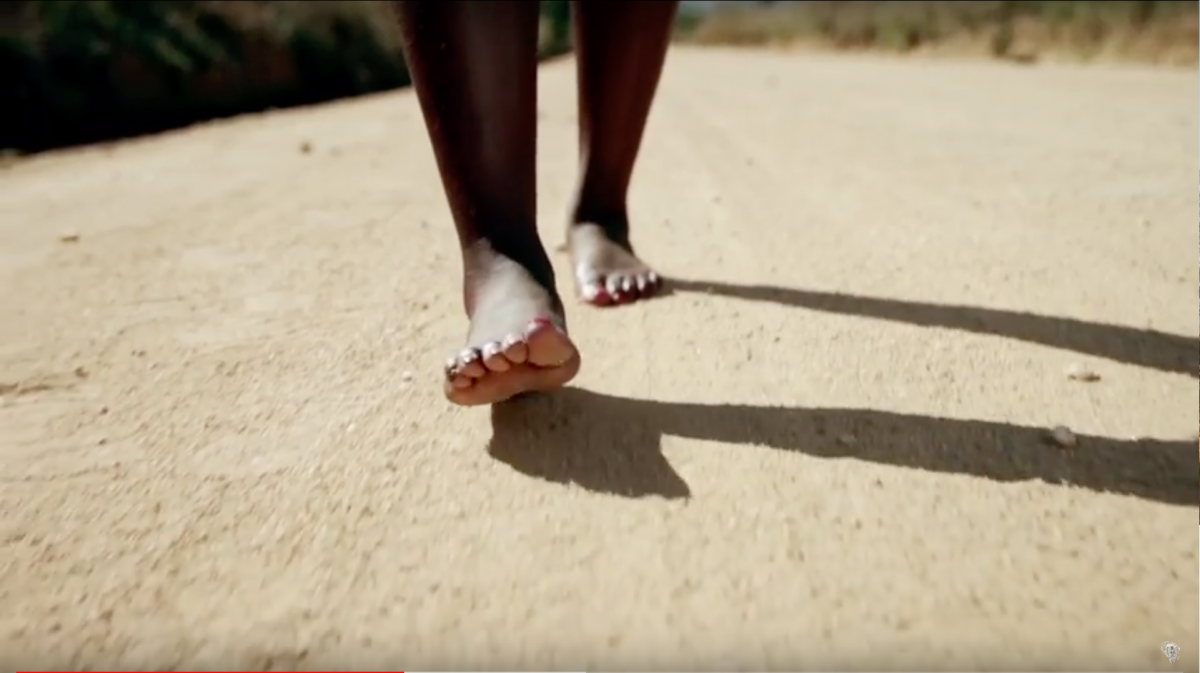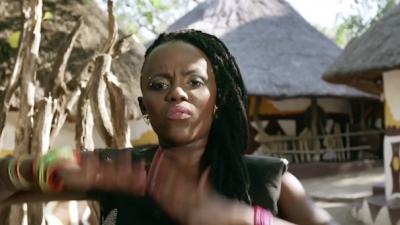
Exotica in South African House Music
South Africa is awash with house music hits. Writer Percy Mabandu takes us through a maze of hit music videos to study the genre’s fascination with performed exotica. He asks whether these clips aim to please international audiences with African clichés, or represent a re-connection with tradition and the past by nostalgic modern taste-makers. From the Norient book Seismographic Sounds (see and order here).
There’s still something new out of Africa. These days, the continent’s metropolis beams house music videos with heroic DJs in animal skins, dancing to groove party lovers the world over. Hyper-sexualized bare feet maidens with dark complexions still walk village gravel roads to thrill; they wear tongue-rings and leopard print vests, all the while chanting verses about exciting BlackBerry messages, Jameson whiskey and happening party nights. The visuals unfold over the beat of the mythologized African drum – a kind of sonic code for notions of an authentic tribal sound in the electronic genre’s approach to rhythm. This code is evidence of a thriving appetite for exotic African things often co-created by natives for both local and international audiences. It’s as if the victims of old stereotypes about the supposedly dark continent have learned to profit from selling savage trinkets once used to malign them. This carnival of performed exotica is especially curious in a South Africa that just declared twenty-one years of liberation.
House music is king in South Africa – unlike in other parts of the world where it is a niche genre. In the land of Kruger Rand gold coins, the song of the year is more often than not awarded to a house music tune. Here, television screens beam more house music videos than any other genre. There are videos underpinned by displays of opulence and bling-bling with flashy cars, scantily clad girls, and flowing champagne; they are like the city settings of «Happy Song» by DJ Fisherman, or other videos driven by a linear story and some CGI effects like that of «Fairytale» by Liquideep. This bling-bling appeal is not unique. It’s a dominant theme everywhere in pop culture, from reality TV shows to hip hop videos.
Throwbacks to 19th Century Human Zoos?
We are interested in music videos that seem to rely on tribal stereotypes to stand out. They are especially of interest because the lyrical content of these songs often has no connection to the exotic images made to illustrate them. Think here of Johannesburg-based producer DJ Cleo’s «Aaaiiiyyy.» The song is about nothing in particular, except a lyric that excitedly invites the listener to dance. The video, however, is set in a Zulu village where young men compete to win favor with some docile maiden’s father.
Another spectacular hit which relied on tribal imagery is «Xigubu» by DJ Ganyani featuring FB. It raked up over 2.3 million views on YouTube. The song is built on the iconic drum sound and a monologue of a girl whose night is brought to thrilling life thanks to a BlackBerry message from DJ Ganyani and his friends. They go to a party where she sees a hot brother on whom she makes a move. She tells of her wet nether area. The story is punctuated by declarations of how «xigubu», which in Shangaan translates to the drum or the beat, is amazing and thumping. Again, the men in animal skins and the village setting (let alone the bare foot maiden) have nothing to do with the content of the song they illustrate. The comment thread on DJ Ganyani’s «Xigubu» YouTube video foregrounds the problematic way in which black women’s bodies are consumed as curious sexual objects in these videos and in popular media in general. References to something sexy about the singer FB, who is described as otherwise ugly in part because of her dark skin, are debated with passion by commenters. It’s like a throwback to the 19th century scandal surrounding the parading of Saartjie Baartman’s large posterior in Europe.
The music video to «Shonta Mu Mbingu» by Congo-born and Johannesburg-educated producer G’Sparks featuring Mustache and 3XTshi also relies on similar exotic stereotypes. However, the choreography by French-born dancer Lucie Bdt-Mikimi and her Congolese husband Tony Mikimi is obviously theatrical. The make-up, printed cloths, and smoke machines are more reminiscent of the theatre than village tribal life. However, its use of dark exotic figures is telling, too, especially the projection of a sensual European woman dancing wildly with verily muscular African savages. The contrast of her innocent white skin set against the corrupting, wild, and sex-crazed savages is a motif with a long history. Think of King-Kong and Caliban and Miranda.
Then there’s Big Nuz’s «Ntombenhle», which is Zulu for «beautiful girl». The video plays with tribal representations. However, it is done in a meaningful and believable way. The depicted rural scenes are not unlike how life is today. The video shows regular boys playing by the river with little girls coming to fetch water. The boys are taken by the beauty of the young girls. The story cuts to twenty years later and the boys are grown up enough to marry. Here we are given a parody of the dowry negotiation process with banks cards, eager elders and electronic pay points normally used at shops. The reference to village life here is not unusual. There is little embellishment in set and wardrobe. It is not unlike the way urban Africans maintain strong connections with life in their rural areas where many still have close relatives. Remember, for example, recent images of president Jacob Zuma celebrating the traditional wedding of his nephew.
The White Manager and the Black Creative Genius?
Without undermining the agency exercised by the chart topping DJs and music producers in the making of their music videos, it may also help to ask how much control they have over the designing of these images. DJ Ganyani’s «Xigubu» was, for instance, produced by Pilot Films, which is owned by Bruce Patterson who boasts of studying at the New York Film Academy. Could it be that the video represents more of Patterson’s «internationalist» white male ideas of what will help his client to stand out as «something new from Africa» in a global kaleidoscope of unceasing visuals? It’s a question worth considering. African art history has ample examples of these sort of power relations between the African creative genius and the all-knowing white manager. For instance, at the height of apartheid repression, as Sue Williamson observes in her book, Resistance Art (1989): «Dependent on sales through art galleries to a white market, black artists tended to produce carefully non-confrontational work—scenes of jostling township life or traditional rural vistas.»

A Celebration of Identity and Heritage?
However, it must be noted that house music videos are also spectacles of celebration. In fact, the depicted songs are often created with the aim of capturing the mood of celebrations across both the urban and rural African experience and the world at large. These celebrations, especially weddings, often among people who live thoroughly modern lives in big cities, reflect a fascination with traditional iconography in ways not unlike the house music videos. The wedding celebrations across Africa of today include both tradition and what is called a «white wedding», which reflects the modern lives of people involved. The marrying couple and their entourage will dress in their latest designer suits and wedding gown, then later arrive to the parade dressed in their respective traditional regalia. A Zulu man will wear his leopard skins and cow hide shield to receive his new wife. The bride may arrive in an equally colourful feminine equivalent in keeping with her particular ethnicity. Guests too often arrive at celebrations clad in a colourful array of traditional wear to join in on the celebrations. There’ll be tribal ululations alongside the latest international hit songs played by the local DJ.
In this way, the images of these weddings as they appear on the society pages of newspapers or on television shows – like the hit reality show Our Perfect Wedding – register a similar note as that of the house music videos. Hence, the perceptions of what is exotic in popular media sit at a place of tension within a post-modern African spectacle that borrows from its antique history; it also projects its modernity into the same picture frame. Hence, these videos emerge at the intersection of a living history of (post-)colonial power politics, its related visual culture, and a popular media economy built of parody, pastiche, and some lingering notions of African authenticity.
This text was published first in the second Norient book «Seismographic Sounds».
Biography
Shop

Published on October 02, 2018
Last updated on April 29, 2024
Topics
From Self-Orientalism in Arab music to the sheer exploitation of Brazilian funk music by acclaimed artists: how exotica examine aesthetics playing with the other and cultural misunderstandings.
Does one really need the other in order to understand oneself?
From westernized hip hop in Bhutan to the instrumentalization of «lusofonia» by Portuguese cultural politics.